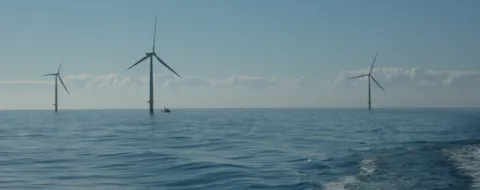Major incident descriptions – a gap in offshore safety resources?
Since Piper Alpha, very few major incident descriptions have been published by the offshore industry. I think this is an important gap in our safety management resources.
Published: 4 July, 2017
When we think about hydrocarbon releases from process equipment on offshore oil and gas installations, what is our mental picture? For me, Piper Alpha comes to mind: an incomplete maintenance operation, a condensate leak through a loose flange, gas alarms, ignition, explosion, escalation – all described in immense detail in Lord Cullen’s investigation [1]. This is what offshore safety management aims to prevent.
Since then the UK Sector has experienced more than 4000 leaks, all painstakingly recorded in the HSE’s hydrocarbon release database (HCRD) – a tremendously informative source. To learn the lessons of these incidents, we need to understand them. This needs more information than the simple entries in the database – we need descriptions of major incidents, explaining the how and why, so that we can keep our mental picture up to date.
Since Piper Alpha, hardly any descriptions of major process incidents have been published by the oil & gas industry. As a result, I think an entire field of potential learning from incidents is being neglected.
Some learning routes from accidents and incidents
Learning from incidents
Learning from incidents is an important component of safety management. Of course, accidents like Piper Alpha deserve detailed investigation, and the results should be published. But such major accidents are very rare. One of Cullen’s recommendations was that the HSE should maintain a database of hydrocarbon leaks for the benefit of the industry. This has been faithfully enacted. Yet the HCRD contains mainly small unignited leaks. It is ideal for statistical analysis, and is often used in quantitative risk assessment (QRA), but offers little to help the qualitative understanding of hydrocarbon risks. Surely there is some potential learning from the more severe of these incidents beyond simply counting their frequency?
Near-misses
Major incidents are a type of near-miss. If the larger or longer-lasting leaks had ignited or escalated, a major accident could have resulted. To manage their risks, we need to know about their causes – what went wrong? We can also learn from successful mitigations – what prevented them turning into major accidents?
Major incident descriptions
Consider how little information is available about major hydrocarbon leaks. The free-text field for “Comments” in HCRD is blank in approximately half of the leaks that it identifies as “major”, and is uninformative for many of the others. The other 120 fields categorise the incident in different ways, but often add up to a mystery about exactly what caused the release, giving as many questions as answers.
Investigations, which are carried out by the operator and the HSE, are rarely shared. In Norway, investigations of fires and major hydrocarbon leaks are routinely published, but not in the UK.
The aviation industry illustrates the type of information produced by an industry that is fully committed to learning from incidents. Compare the monthly publication of major incident investigations on the AAIB website with the HSE equivalent, which contains just two safety alerts from the last decade.
Attempted justifications
I have heard several attempts to justify the situation. Operators are in a competitive environment, and the ones that publish accident reports might be unfairly seen as untrustworthy. Their lawyers would oppose the publication of information that might be used to prosecute them. Regulators try to work alongside operators rather than criticise them in public.
I think the examples of UK aviation and Norwegian offshore regulators expose these as weak excuses. I prefer to think that the offshore industry is unaware of the gap that has developed in its learning from incidents.
Benefits
What incentive can we offer for the industry to fill the gap? Accidents are rare, and managing their risks requires the sharing of information. Some companies are large enough to have considerable experience, but even they would gain by sharing lessons with their competitors. Operational risk assessments are the main potential intervention to prevent accidents, but they rely on an understanding of accident causation that cannot be gained from a database.
Even QRA, which draws heavily from HCRD, could benefit from more information about individual incidents. It may inadvertently misinterpret the data, if it is impossible to verify assumptions about key incidents that dominate the results.
A way forward
I suggest that learning from incidents should reflect the range of scales in which incidents occur:
- Major accidents should be investigated in detail and published in full.
- A few of the most severe incidents (e.g. fires or major leaks) that occur each year should be investigated and an anonymised summary should be published.
- All leaks should be summarised in a database and made available for analysis.
At present, the offshore industry in Norway is achieving this; elsewhere the performance is not so good. I would like to see the middle layer filled in before Wikipedia does it for us.
[1] The Hon. Lord Cullen (1990), “The Public Inquiry into the Piper Alpha Disaster”, London: HMSO, p284.
7/4/2017 8:00:00 AM
